Sophomore Slump?
Where does the term “sophomore slump” come from? It’s used when a sophomore (second-year) student fails to meet the high standards they established during their freshman (first-year) year. In musical terms, it is often described as “the difficult second album”. The reality is that it can take most bands years to get their first album released. If it is successful, they are usually under intense pressure from their record label and management team to get their next album out as soon as possible, often to the detriment of quality.
So how does that apply to Odyssey?
In this case, I believe it has gone the opposite way. With the success seen by L.A.B. Golf over the last couple of seasons, it felt like Odyssey rushed the original Square 2 Square product to market. They even risked ridicule (and lawsuits) by producing a “look-alike” of the DF3.

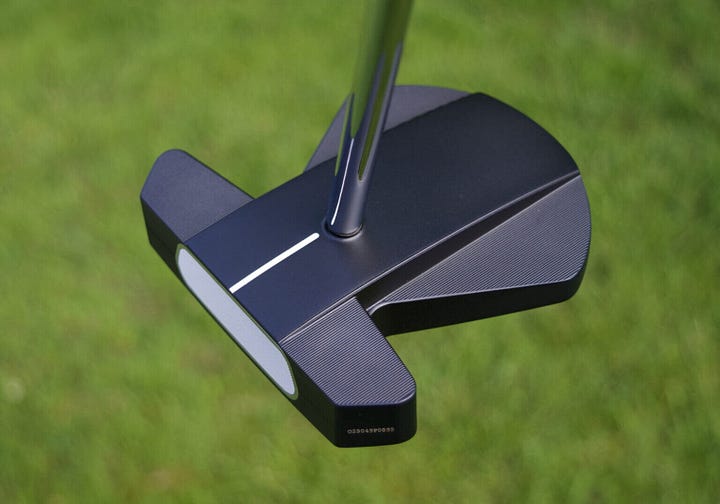
Essentially, it looked like Odyssey just needed to get to market quickly, so they took their most successful putters - the Jailbird, #7 and Double Wide and turned them into zero-torque versions. They had a lot of onset (as you can see above), but Odyssey didn’t have a press grip and just used a standard jumbo. Other than shaft length, there were no customisation options available and lie angle was fixed at 70°. It was a bit like a Temu copy (can you tell I didn’t like them), designed to hit a mass-market price point (£249). Full marks for effort, though, as getting Odyssey on board has really helped legitimise the zero-torque concept in the eyes of the consumer.
Bat Out of Hell
Yes, really, this was Meat Loaf’s second album. His first album was a rather odd, musical theatre effort called Stoney and Meat Loaf, released in 1971. Then came Bat Out of Hell, not just one of the best second albums ever, but possibly one of the best albums full-stop? Of course, the answer to that, just like views on zero-torque putters, comes down to personal taste. Personally, I’m still not convinced about zero-torque, and would likely vote for Nevermind by Nirvana as best second album instead.
Odyssey have learned from their first release, taken their time, listened to feedback and produced a much better putter with the S2S Tri-Hot.
I was a big fan of the previous Tri-Hot 5K range of putters and owned both the #3 and #7 putters. I thought they were weighted beautifully and felt great to swing. For me, they were only let down by the face insert. If you’ve read any of my previous reviews, you’ll know I have a preference (some would say bias) for milled faces. How would this model stack up?
New shaft position
The most obvious difference from the previous model (other than colour) is the position of the shaft, which has moved significantly forward. That is something that suits my eye much better, as I’ve really struggled with the onset that’s common with most other ZT putters. It’s why I’ve gravitated more towards the ZT blades like the L.A.B. Link.1 (review) and the BGT Paradox (review). It’s also what I preferred about the Axis1 Rose (review).
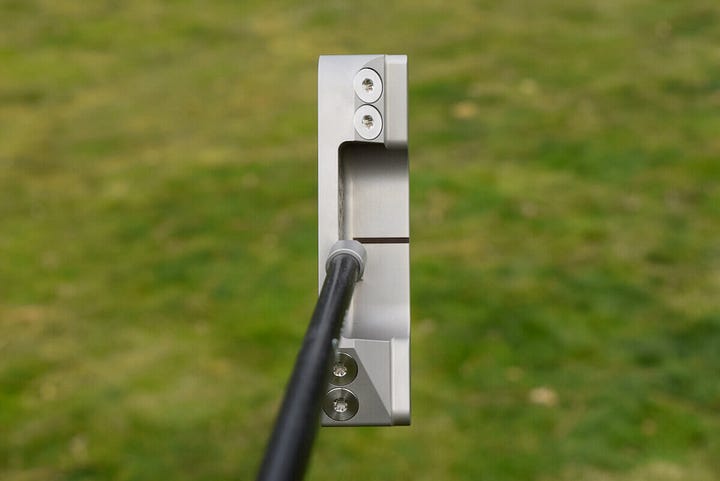
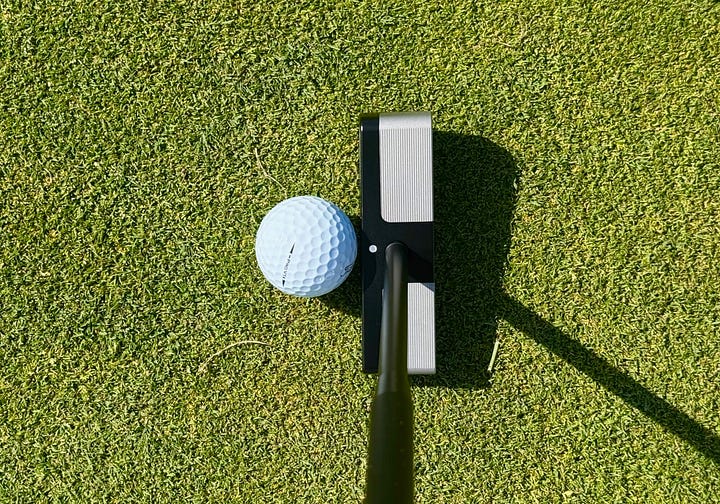
What this shaft position tells you is that Odyssey have moved the centre of gravity of these putters much closer to the face. If you look at the picture of the Jailbird above, you can see the heavy tungsten weights used to create this. Essentially, this looks like a heavy blade putter with different lightweight alignment aids bolted to the back. That is pretty much the same as how Axis1 appears to work, as you can see below.
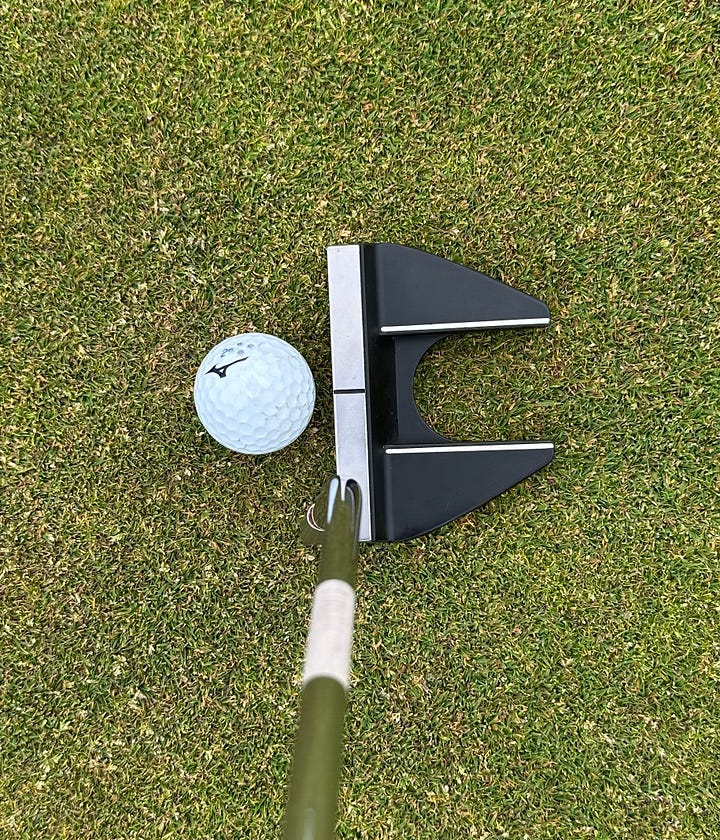

Like with low-spin drivers, the downside to moving the centre of gravity much closer to the face can be a lack of forgiveness you would normally associate with mallet putters like these. Saying that, putting is very different from driving, so forgiveness should be less of an issue. Just be aware.
New shaft and lie angle
As well as the new shaft position, it is heavier at 120g against 90g, stiffer and also 2° more upright at 72°. As far as I can see from their website, there is no lie angle customisation available. As a comparison, the standard lie angle for L.A.B. putters is 69°, in line with many other manufacturers. This may take a bit of getting used to, and you may have to change your setup to be comfortable.
New face insert
Odyssey are making a big deal about their new face insert. This is a dual-layer urethane insert incorporating Ai design to be soft on the outside and firm on the inside, and it is combined with a new “Forward Roll” groove pattern.
Hands on with the Rossie
I opted for the Rossie as I felt it was the best model to compare against my current SeeMore putter. It is smaller, has fewer alignment aids and is a head design I have liked during previous Odyssey fittings.






Like my previous experiences with the Tri-Hot 5K range, this “feels” like a great quality putter. I like the new pistol grip, and the new black shaft looks great. The head cover is magnetic and well-padded (Scotty Cameron take note), providing good protection.
How did it perform
Testing was done at the St Andrews Academy putting green on a cold, wet and windy November day. Keeping my hands warm was a challenge! The green was in good condition, having recovered from being cored and sanded a few weeks ago, but it was slower than normal.
The Rossie went through my normal testing protocol with 6 putts from 3, 6, 9, 12 and 15 feet, followed by a 30-foot lag test and a start line drill. The benchmark putter was my SeeMore MiniGiant FGP. As it’s my current putter, it only does the drills once.
The data in the table below is taken from “Every Shot Counts” by Mark Broadie and is used to put the performance above into context.
Pros and Cons
Alignment: Remember that at 72° lie angle, this putter is likely more upright than any other putter you are using. That will potentially influence your perception of aim. In my testing, I felt like I was aiming everything left, although the results suggested I had a two-way miss. In hindsight, it would have been interesting to try the Jailbird to see if the versa system changed that perception.
Interestingly, when I did my in-person fitting for the LAB DF3 (here), the recommendation was a lie angle of 73° against their online recommendation of 68° and a final compromise of 71°, so this putter should have been a good fit for me. I’d assume the more upright the lie angle, the more it promotes a straight stroke rather than an arcing stroke.
New Grip: Odyssey are boasting about their new mid-sized pistol grip, saying it was created “after surveying the most popular grips used on tour”. It felt nice enough, but it was nothing special relative to a SuperStroke, and it got very slippery when wet.
Insert: Hmm, some will love it, but I didn’t and prefer something firmer. Of the insert putters I’ve tested recently, the one I’ve liked most is the Spider 5K ZT.
Keeping it clean: It was good to use this on a damp day, as I think it demonstrated how hard it will be to keep this putter clean. The cut-out areas on the bottom are a magnet for grass, grime and sand. The lines on the face quickly clogged up and were not the easiest to wipe clean. I think that would drive me a bit mad.


Head cover: Top notch. Well-padded and a super-secure magnetic fixing. A nice, neat and tidy design.


Performance: It didn’t quite match my SeeMore, but it wasn’t bad. If it weren’t such a horrible cold day, I would have stayed out testing for longer and maybe given it a second run through the tests. The more I used it, the more I adapted to the upright lie angle and started putting better with it. The single biggest issue I had with it was pace control. I just couldn’t find a happy medium with it on longer puts and was either short or miles past. On the 12 and 15-foot tests, I was consistently short. I can’t say definitively if that’s down to the softer feeling insert (relative to my milled putters) or just a swing feel issue with zero-torque putters.
Price: At the RRP of £469, this is an expensive option, although many retailers appear to be selling it slightly cheaper at an average online price of £429. In context, that’s around the same price as the Spider 5K ZT and the entry-level L.A.B. options (pre-customisation). It’s a significant discount to the £699 RRP for the Toulon Formula series putters and close to the new Scotty Cameron OC options at £499. Note that there appears to be significant discounting of the original S2S models at the moment.
Is there really any difference from a standard centre shaft putter? With the shaft now this far forward, is the average golfer really going to notice any difference between a zero-torque mallet and an “old-school” centre shafted mallet?
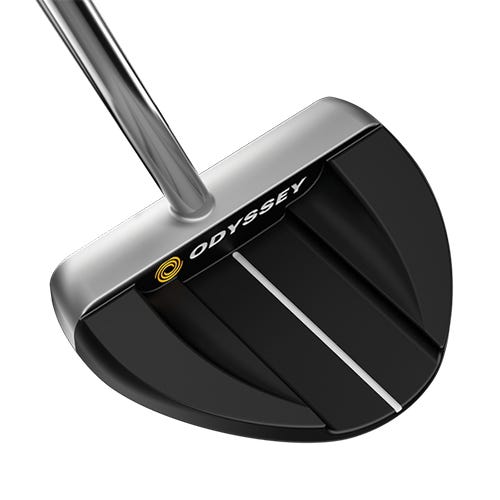

I know the CoG of the putter on the left will be slightly further back from the face compared to the new Rossie, but would I be able to tell the difference? If I can find two heads the same, then I’ll do a test.
Centre-shafted designs remain an acquired taste and don’t suit every eye. The angle the shaft enters the head and the proximity to the ball at address can make some golfers feel queasy. I’m in the camp that visually prefers a heel-shafted putter, but if my performance improved markedly, then I’m sure I’d adapt quickly.
Conclusion
This second zero-torque offering from Odyssey is a significant improvement over their original models. It’s a marked quality improvement, and the reduced onset will make it appeal to a wider audience of golfers. The lack of customisation for lie angle is slightly disappointing, but if 72° suits you, then you really should give this some consideration. Alternatively, if you like the original S2S product line, then now could be a great time to take advantage of the heavy price discounting.
Finally, I’d like to thank Adam Legg and Auchterlonies of St Andrews for lending me this putter to review. Get along to see Adam for a putter and get an objective view of what works for you.

